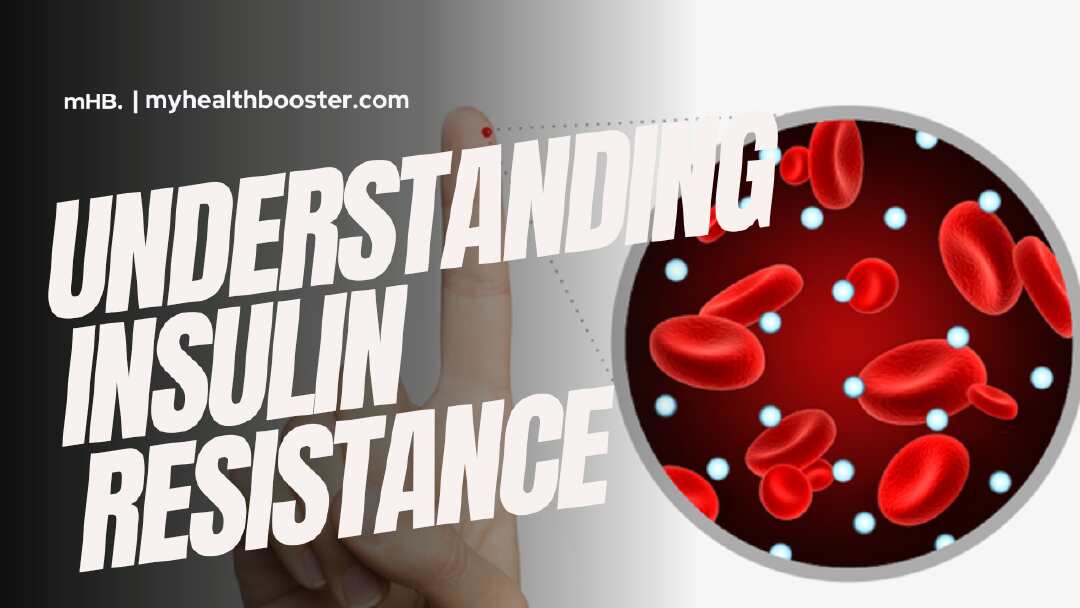Insulin resistance is a metabolic condition that affects millions of people worldwide. It occurs when your body’s cells don’t respond effectively to insulin, a hormone produced by the pancreas. Insulin plays a crucial role in regulating blood sugar (glucose) levels, allowing your cells to absorb and use glucose for energy. When your cells become resistant to insulin, it can lead to a range of health issues. In this article, we’ll explore the signs of insulin resistance, its main causes, and how to manage it effectively.
What Are the Signs of Being Insulin Resistant?
- High Blood Sugar Levels: Elevated fasting blood sugar levels are often an early sign of insulin resistance. Your body’s cells are not responding adequately to insulin’s signal to take up glucose, causing sugar to accumulate in the bloodstream.
- Increased Hunger: Insulin resistance can lead to increased hunger, especially shortly after eating. This occurs because glucose isn’t efficiently entering your cells, leaving you feeling unsatisfied.
- Weight Gain: Many individuals with insulin resistance experience unexplained weight gain, particularly around the abdominal area. This is often due to the body’s inability to use glucose effectively, leading to its storage as fat.
- Fatigue: When your cells can’t access glucose for energy, you may feel tired and fatigued, even after a full night’s sleep.
- Frequent Urination: Elevated blood sugar levels can result in increased thirst and urination as your body attempts to remove excess glucose through urine.
- Dark Skin Patches: A condition called acanthosis nigricans may develop, characterized by dark, velvety patches of skin, often seen in the neck, armpits, or groin area.
What Is the Main Cause of Insulin Resistance?
Insulin resistance can be influenced by various factors, but the primary causes include:
- Obesity: Excess fat, especially visceral fat surrounding organs, is a major contributor to insulin resistance. Fat cells release substances that can interfere with insulin’s action.
- Lack of Physical Activity: Sedentary lifestyles can contribute to insulin resistance. Regular exercise helps improve insulin sensitivity, allowing cells to use glucose more effectively.
- Genetics: Some people are genetically predisposed to insulin resistance, making it more likely to develop the condition.
- Poor Diet: Diets high in refined carbohydrates, sugary foods, and processed foods can contribute to insulin resistance. These foods can cause rapid spikes in blood sugar levels, leading to increased insulin production and, over time, resistance.
How Do You Fix Insulin Resistance?
Managing insulin resistance is crucial for preventing more serious conditions like type 2 diabetes. Here are some strategies to help improve insulin sensitivity:
- Healthy Diet: Focus on a balanced diet rich in whole foods, including fruits, vegetables, lean proteins, whole grains, and healthy fats. Reduce your intake of sugary and processed foods.
- Regular Exercise: Engage in regular physical activity, including both cardiovascular exercises and strength training. Exercise helps your cells become more responsive to insulin.
- Weight Management: Achieving and maintaining a healthy weight can significantly improve insulin sensitivity. Losing excess body fat, particularly abdominal fat, is particularly beneficial.
- Monitor Blood Sugar: Keep track of your blood sugar levels regularly, especially if you’re at risk of insulin resistance. This can help you and your healthcare provider make informed decisions about your health.
- Medications: In some cases, your healthcare provider may prescribe medications like metformin to help manage insulin resistance.
What’s the Difference Between Insulin Resistance and Diabetes?
While insulin resistance and diabetes are related, they are distinct conditions:
- Insulin Resistance: This is a condition where your cells don’t respond effectively to insulin, leading to elevated blood sugar levels. It often precedes type 2 diabetes.
- Type 2 Diabetes: This is a chronic condition characterized by high blood sugar levels resulting from a combination of insulin resistance and impaired insulin production. In type 2 diabetes, the pancreas can’t produce enough insulin to compensate for the body’s resistance.
In summary, insulin resistance is a precursor to type 2 diabetes. By recognizing the signs, addressing its causes, and making positive lifestyle changes, you can effectively manage insulin resistance and reduce your risk of developing diabetes and other related health complications. If you suspect you may be insulin resistant, consult with a healthcare professional for a thorough evaluation and personalized guidance.
